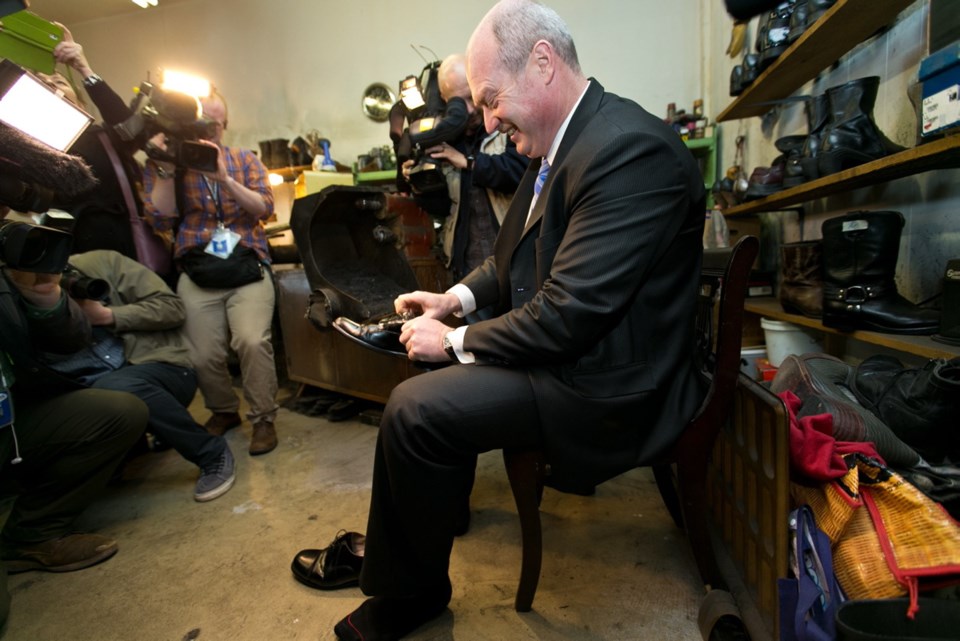 Last week, in response to a freedom of information request, the government released documents about a number of advertising campaigns.
Last week, in response to a freedom of information request, the government released documents about a number of advertising campaigns.
Dozens of pages disclosed much of the thinking behind various campaigns. The creative concepts, the media-placement plans and the budgets were all outlined.
Government ad campaigns are a fact of life, so there wasn’t much particularly noteworthy in them. The fact they tend to expand prior to an election is also a given these days.
The striking thing for an outsider looking at the thinking behind the ads is the level of sophistication the government has reached in targeting its message to the people it’s trying to reach. At a time when mainstream media are struggling, the B.C. government is running its own communications campaigns at full throttle. And since government is calling the shots on the message and how it’s delivered, the results are what you’d expect — a one-sided version of a story.
The rationale for the “Climate Leadership Plan” is one example. The short form of that story is that B.C. invented the carbon tax in 2008 and hasn’t done much of note since then.
But the thinking behind the ad campaign extolling the virtues of the purported reboot of that initiative last year paints a different picture. The Climate Leadership Plan “reinforces B.C.’s global leadership.” It creates jobs, fights emissions, has 21 new strategic actions and puts “B.C. on course to achieve its 2050 target of an 80 per cent reduction in emissions from 2007 levels.” (The fact that meeting the 2020 target is an impossibility is left out.)
The key messages in the outline were simple: The Climate Leadership Plan has launched; you can save up to $8,250 on a new electric vehicle, B.C. is proud to be a world leader on climate action and “let’s continue to lead Canada on climate action.”
The sophistication is on display in some of the breakdowns. One of the measurements they used was “Facebook video website click units.” The budget to send the message that B.C. is a climate-action leader into the cortex of every voter who follows the government on Facebook was $25,000.
Another example is the Government Communications and Public Engagement office’s marketing brief for last fall’s distracted-driving campaign.
The goal was obviously worthy — drive home the message that using your mobile phone while driving will cost you $543 in penalties. The tactics involved paid social media, paying to disseminate “website click units” through Facebook and driving content through B.C.’s Facebook and Twitter feeds.
It’s revealing to note the media-buy strategy. TV, print, radio — 0. New media online, mobile and social media — $19,000. Since they were trying to reach younger drivers (although presumably not while they were driving), it makes perfect sense, much to the dismay of mainstream ad-sales people.
The much bigger campaigns are obviously just as sophisticated. The government budgeted $773,000 designing a campaign on connecting British Columbians to services and programs.
The thinking outlined in the documents was that the government “is focused on efficiently delivering effective and meaningful services to help keep life more affordable.”
But people too often lack awareness and information about them, it said.
The two statements are mutually exclusive. If people too often don’t know about them, then the programs aren’t effective and meaningful. But never mind that.
The communications office ordered up the B.C. Services campaign to increase awareness of all those effective and meaningful things they are doing. It focused on the new curriculum, the education and training grant, the tax exemption for new homes and the medical-premium assistance changes.
The “foundational narrative” was: Government is delivering great programs you should know about.
It started last spring and will roll right through to next March. The budget for the media buy is $3.7 million.
That’s a lot of money to spend telling people about services, some of which have been around for decades. But it’s only part of the outlay to come. “Legacy media” might be shrinking, but that doesn’t stop governments from just making their own news. All it takes is your money.



